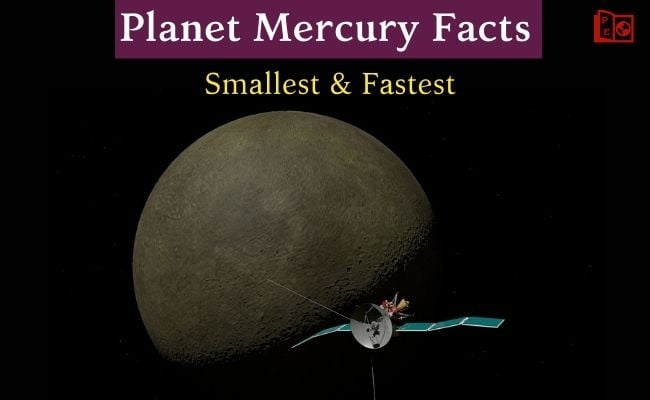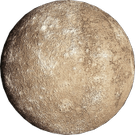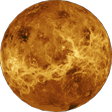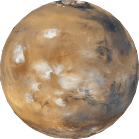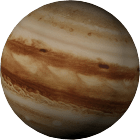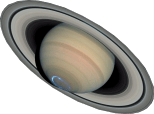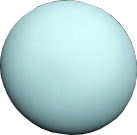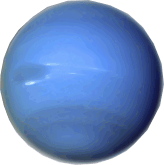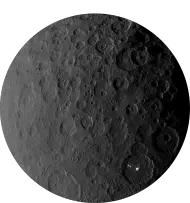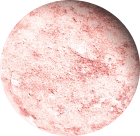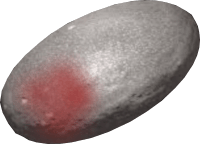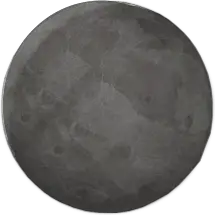Planet Mercury is the closest planet to the sun and the smallest planet in the solar system. It is a terrestrial and rocky planet like venus, earth, and mars. Mercury planet can be seen as a star-like object in the twilight after sunset and before sunrise.
It is named after the Roman messenger of god ‘Mercury’ and in ancient times Babylonians called it Nabu. Planet mercury was known from ancient times. In around 200 BC a Greek astronomer Timocharis has recorded the mercury as a star and supposed that it orbits around the earth.
Most ancient people believed that earth is in the center of the universe and all planets orbit around it. In 1543 AD famous mathematician and astronomer Nicolaus Copernicus gave his theory that all planets including mercury revolve around the sun.
Physical characteristics of Mercury:-
- Orbital period (1 Year): 88 days (0.24 year)
- Revolution period (1 Day): 58 earth days
- Average orbital speed: 47.36 km/sec around the sun
- Mean radius: 2440 km
- Mass: 3.3 × 1023 kg (0.055 times of earth)
- Volume: 6.08 × 1010 km3 (0.056 times of earth)
- Average density: 5.43 gm/cm3
- Surface gravity: 3.7 m/sec2 (0.38 times of earth)
- Escape velocity: 4.35 km/sec
- Surface temperature: -173 to 430 °C
- Moons: No known moons
Mercury planet facts
Here are some interesting facts about Mercury that can surprise you after knowing about it.
# Mercury day-night cycle is 176 earth days, longer than one mercury year
Planet Mercury’s orbit around the sun is very quick and a revolution about its axis is very slow. This is a unique behavior of mercury. It takes only 88 earth days to orbit around the sun that is one year of the mercury.
Whereas it takes almost 58 earth days to revolve around its own axis. But it is tidally locked with the Sun in a 3:2 spin-orbit resonance, thus it revolves 3 times around its axis for every 2 orbits around the sun. So after 176 earth days, it faces the same position of the sun that is the one day of the planet mercury, so it is called one ‘mercury day’.
In this way, it takes 176 earth days to complete one solar day (day-night cycle) on mercury. (A planet’s solar day is a time period to rotate about its axis so that the Sun appears in the same position in the sky).
Related:- How long is a day and year on each planet
# 18 mercury size planet can fit in the earth
The volume of Mercury is 6.08 × 1010 km3 that is around 18 times smaller than the earth. So basically 18 mercury size planet can enter the earth.
# Mercury moons (It does not have any moon)
Planet Mercury including planet Venus, these two planets do not have any natural moons that revolve around them. Mercury planet also does not have any rings around it as giant planets have.
# The smallest planet in our solar system
The mean diameter of the mercury is 4880 km. So this small diameter makes it the smallest in all planets of the solar system. It is a good fact that some of the moons of other planets are bigger than the planet mercury.
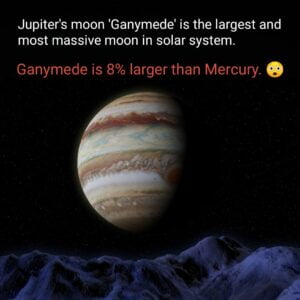
Jupiter’s moon ‘Ganymede’ is the largest moon of our solar system and it is 8% larger than mercury.
# Second densest planet after earth
The average density of the earth 5.5 gm/cm3, is the densest planet in our solar system whereas Mercury has an average density of 5.43 gm/cm3, which is the 2nd densest planet of our solar system. Though mercury is so small compare to other planets still it has such a high density because it is made of heavy metals and silicates.
# The closest planet to the sun
Mercury is the first planet from the sun and it has a distance of around 57910000 km from the sun. Because of this distance, mercury is the nearest to the sun whereas the distance of mercury from the earth is around 77000000 km. It is also the fastest planet that has an orbital speed of almost 48 km/sec.
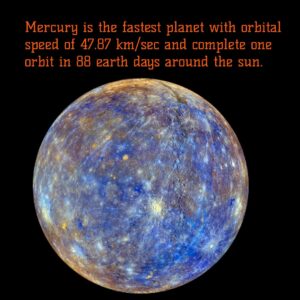
# Most elliptical orbit
The orbit of the mercury is the most elliptical rather than circular. The perihelion point (closest to the sun) of this is 46,001,200 km, whereas the aphelion point (farthest to the sun) is 69,816,900 km from the sun.
It revolves around the sun’s orbit with an eccentricity of 0.206 which is the highest in all solar system planets.
Related:- Closest and farthest distance of each planet from Sun
# Mercury and Venus both have two same nickname
Mercury and Venus both are the nearest to the sun. The distance of mercury from the is around 58 million km, while the distance of venus from the sun is around 108 million km. These planets can be seen easily from the earth at the time of sunset and sunrise. So both are called with nicknames ‘morning star’ and ‘evening star’.
# 2nd hottest planet of our solar system
Though mercury is the closest to the sun still it is not hotter than planet venus in our solar system. Planet Venus is the hottest planet in our solar system because of its dense atmosphere.
The temperature on the mercury at day time is around 430 ºC, whereas the temperature at night time reaches around -173 ºC in equatorial regions. One of the best facts about mercury is, the temperature in polar regions is constantly below to -93 °C. (It’s nearest to the sun, Isn’t it amazing?)
# Mercury gravity is 38% of earth’s gravity
If your weight on earth is 100 N then your weight on the mercury would be only 38 N, it is because of its gravity which is only 0.38 times of earth’s gravity.
# Mercury has a very thin atmosphere
This planet has a very thin atmosphere or you can say almost no atmosphere. The thin atmospheric region is called the exosphere of the mercury and it has a pressure of around 10-14 bar.
The atmosphere of the mercury is made up of its own surface atoms. Gases of the atmosphere escape in space because of its low gravity and high temperature. These gases again replenished by its surface atoms so this way it has a thinner atmosphere.
# Two spacecraft have visited the planet Mercury so far
Spacecraft ‘Mariner 10’ visited the mercury in 1974 and 1975 while another spacecraft ‘Messenger’ was launched in 2004 and orbited around the sun more than 4000 times.
# A spacecraft would reach on mercury in 2025
A mission called BepiColombo has sent a spacecraft that would reach planet mercury by 2025. This is a joint mission of the European Space Agency (ESA) and the Japan Aerospace Exploration Agency (JAXA).
So these were some interesting planet mercury facts, I hope you have liked them. If you have any queries or any suggestions regarding this article, comment us below. For more interesting Solar system planet facts check the below images.
- 5 Best Solar System Backpacks in 2024

- Mass of Planets in Order from Lightest to Heaviest
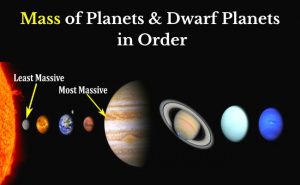
- Star Projector {2024}: Star Night Light Projector

